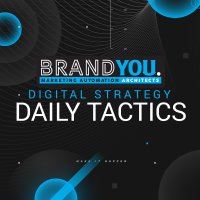Buying an expensive new product or service is a major decision. Because of this, you are unlikely to make a purchase without weighing the pros and cons first. To help your prospects make informed decisions that benefit your sales efforts and ultimately your bottom line as well, consider this tried-and-tested method for connecting content with leads, opportunities, and sales: Assignment Selling.
Assignment Selling aligns your Sales and Marketing department’s efforts towards profits when the two join forces to create high quality pieces of educational content related to potential customer’s pain points. The idea is to educate your potential customer BEFORE the sales appointment and shorten the sales cycle.
This article will introduce you to assignment selling, the process and best practices behind creating and delivering winning content through giving your potential customer "homework".
Assignment Selling defined.
Assignment Selling is a methodology that teaches the sales skill of using educational content to resolve buyer concerns and answer their burning questions, usually the top 7-10 questions. This educational content can be created in any media, including video, audio and written content.
The end result is that prospects are more prepared for a sales call and there is less work for you to do when you make the sales appointment because the prospect already has a strong grasp of the value of your product or service.
How did Assignment Selling originate?
The concept started with Marcus Sheridan the author of They Ask, You Answer. It had taken Marcus a long time to come up with the selling concept for his swimming pool company, River Pools and Spas.
To cut through all this confusion and figure out what he needed to do to increase sales, Marcus sat down and went through his website page by page, counting the number of views each page received.
He found that his “lookers” barely read anything before requesting a sales call, while his “buyers” spent an average of 25–30 minutes reading about (and hopefully learning about) swimming pools.
The formula was simple. The more website pages prospects viewed, the higher their likelihood of closing a deal became.
Key difference between “lookers” and “buyers”.
Marcus did not say that “lookers” were bad and “buyers” were good.
He just determined that "lookers" requested sales calls even though they were fairly uninformed about the process and cost of purchasing a pool. And, in some cases, they were completely ignorant and after the sales call, usually realized a pool was not a good fit for them.
On the other hand, "buyers” had already done extensive research on his business and had already formed an opinion about whether or not they should use his product or service. And, when they called they were usually ready to buy with just a little more information.
The big takeaway from this analysis was how very different prospects responded to the same sales process. While both groups asked for a sales call, the first group ‘lookers’ were uninformed– it was just a part of their decision-making process, and had no intention or interest in buying (yet).
Putting Assignment Selling into Action
Getting people to be “buyers” is just part of the challenge. Giving customers a reason to buy from you again and again should be your ultimate goal.
The best way to do that? Make sure your content offers valuable educational information that helps consumers make informed buying decisions BEFORE the sales appointment.
Your website should have a "Learning" section that includes articles and videos covering The Big 5, buyers and selling guides, and more. This section should offer educational content that helps consumers make a decision about what they're buying and why they should choose you — all for free.
READ: Digital Strategy Starts with Your Website: 5 Key Components of a Perfect Website
Getting everyone involved in sales together
Getting your sales team to use content in their sales efforts is crucial.
Salespeople — especially those who sell products that are complicated, expensive, or otherwise difficult to understand — often find themselves with a lot of questions that they’d love to be able to answer before they're face-to-face with a customer or on a sales phone call.
Modern buyers are seeking answers to The Big 5:
Cost and pricing.
Comparisons.
Problems (theirs and yours).
Best of lists (best in class, best practices).
Reviews.
Trying to answer those questions before they get asked through Assignment Selling can be incredibly valuable and save your sales team tons of time.
But, if they don’t know where to find that information and it isn’t written down in plain language, answering those questions becomes much more difficult because it means your salespeople have to spend time searching for the answers themselves.
Create an easily accessible "Learning" section
One of the best ways to convert sales is to provide a clear user experience.
For your sales team, that means being able to quickly find the information they need, when they need it. Create a repository of links to all of your content—articles, videos, guides, white papers, downloadable PDFs—and send it out to your sales team. That way, when someone requests more information about a topic, your team can reference this repository and link directly to the relevant content.
Another benefit of having a "Learning" section is that Search engines reward websites that are well organized that answer customer’s questions by giving them higher rankings in search results. People who visit your website are also more likely to return if they can easily find the information they need. Organizing your business’s answers to your customer's question will save you time and money in the long run.
Assignment Selling Tips
There are plenty of ways to educate prospects before you even call them and there’s no perfect method for using content in the process.
Sending educational content - Assignment Selling - is meant to be used before and after the sales.
You’re effectively answering questions before they ask them so they’re best prepped for a call and qualified for the sales. And, after a sales call you can continue to educate prospects by using assignment selling as a follow up.
The truth is, you are going to bump into prospects that probably aren't a good fit for your products or services. It's the nature of business. But, you're probably doing it blindly.
Most businesses have no idea which prospects are (and are not) a good fit for their products. They don't know until after the initial call with the prospect and even then, they may not realize it.
If you follow the Assignment Selling process outlined in this article, you can tell which prospects are viable and which ones aren't. You can educate prospects in advance about the value of what you can do for them so that you waste less time on ”bad fit” prospects.
Implement Assignment Selling today.
Get started today by meeting with your sales teams and making sure that customer-facing team members are aware of where your "Learning" section is on your website and everything that is contained within this section.
The use of Assignment Selling is a critical aspect to building a sustainable and effective Digital Strategy. The process requires commitment from everyone, from top-level management down to the sales and marketing team, and will yield significant benefits for your business.
Assignment Selling is not a one-time thing. It’s continuous, and you need to keep adding new content and more advanced resources for successful salespeople to use in their sales conversations.
The great news is that as new salespeople join your team, they will learn which pieces of “evergreen” content is working best for the sales team, putting them on the fast track to making more money for your business.
If you need help…
Schedule a strategy session with Brand You to see how we can help you bring your Digital Strategy to life in your business.




